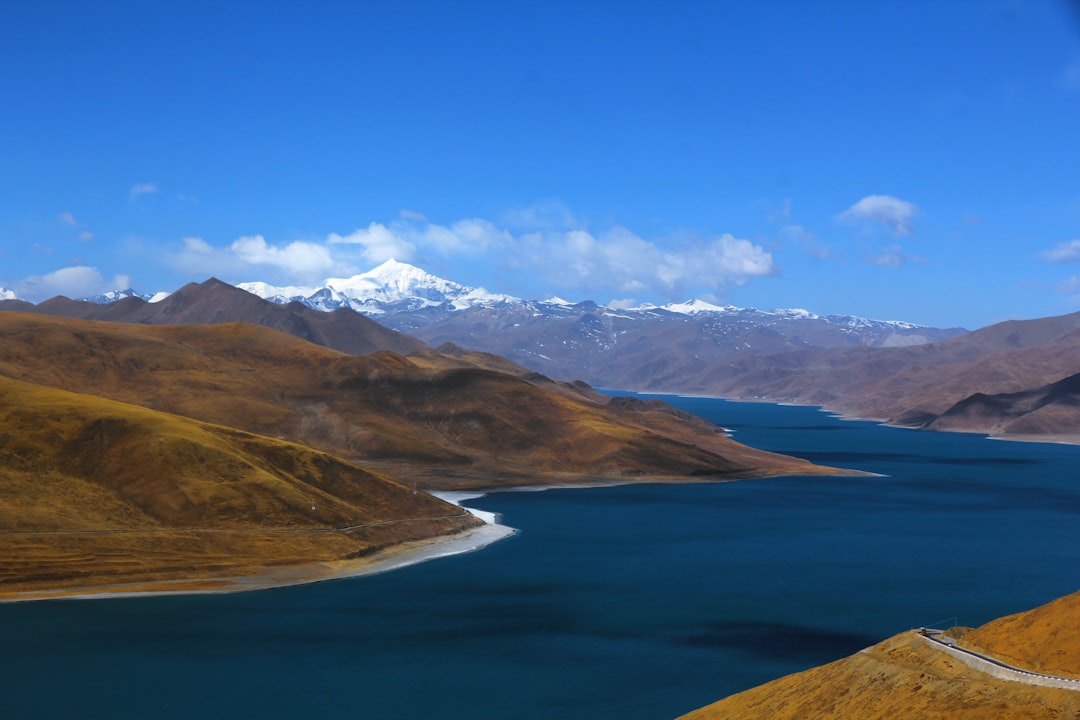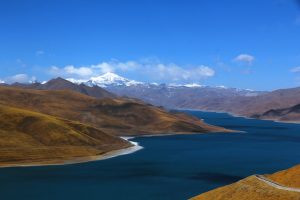Learn Investment: China’s Huge Hydro-Power Project
Discover China’s ambitious hydro-power project in Tibet, set to generate 300 billion kWh. Explore its impact and future. Read more now!
Introduction
Overview of the Project
China has embarked on an ambitious project to construct the world’s largest hydro-power dam in Tibet, with a projected capacity of 300 billion kWh. This monumental undertaking is poised to significantly enhance China’s renewable energy capabilities and contribute to its long-term sustainability goals.
The dam, once completed, will not only be a testament to engineering prowess but also a critical component of China’s energy strategy.
Location and Significance
The dam is strategically located in the Tibetan region, an area rich in natural resources and ecological diversity. This location is crucial as it harnesses the powerful flow of the Yarlung Tsangpo River, one of the major river systems in Asia.
The choice of Tibet underscores China’s commitment to utilizing its geographical advantages to produce clean energy, while also highlighting the geopolitical significance of the region.
Environmental and Economic Impact
The construction of the dam is expected to have far-reaching environmental and economic impacts. On the environmental front, the project aims to reduce carbon emissions by replacing fossil fuel-based energy sources with renewable hydroelectric power.
This aligns with global efforts to combat climate change and reduce environmental degradation.
Economically, the dam is anticipated to create numerous jobs during and after its construction phase. It will also contribute to regional development by providing a stable and sustainable source of energy, which can spur industrial growth and improve living standards in the surrounding areas.
Challenges and Considerations
Despite its potential benefits, the project faces several challenges.
Environmentalists have raised concerns about the ecological impact on the local habitat and biodiversity. The construction and operation of such a large-scale dam could disrupt local ecosystems and affect the livelihoods of communities dependent on the river.
Additionally, the geopolitical implications of the dam cannot be overlooked.
Given the transboundary nature of the Yarlung Tsangpo River, which flows into India and Bangladesh, there are potential diplomatic challenges that China must navigate to ensure regional cooperation and stability.
Explanation
Background of the Project
The ambitious hydro-power dam project in Tibet is part of China’s broader strategy to enhance its renewable energy capabilities. The dam is set to be the largest in the world, with an expected capacity of 300 billion kilowatt-hours (kWh), which will significantly contribute to China’s energy grid.
Located in the Tibetan region, this project is strategically positioned to harness the immense potential of the Yarlung Tsangpo River, known for its powerful flow and elevation drop.
Technological Aspects
The construction of this hydro-power dam involves cutting-edge engineering and technology. The project requires the development of advanced turbines and generators capable of handling the enormous water flow and pressure.
Additionally, the infrastructure must be robust enough to withstand the harsh climatic conditions of the Tibetan plateau, including extreme cold and seismic activity.
Environmental Considerations
While the hydro-power dam promises significant energy production, it also raises environmental concerns. The construction and operation of such a large-scale project could impact local ecosystems, including aquatic life and biodiversity in the region.
Measures are being planned to mitigate these effects, such as fish ladders and wildlife corridors, to ensure minimal disruption to the natural habitat.
Economic and Social Implications
Economically, the dam is expected to boost local and national economies by providing a reliable source of clean energy and creating jobs during and after construction. Socially, it could improve the quality of life in the region by providing electricity to remote areas and supporting infrastructure development.
However, there are also concerns about the displacement of local communities and the preservation of cultural heritage sites.
Geopolitical Impact
The hydro-power dam project has significant geopolitical implications, particularly concerning water rights and regional stability. The Yarlung Tsangpo River flows into India and Bangladesh, making it a critical water source for these countries.
China’s control over the river’s flow could lead to tensions with downstream nations, necessitating diplomatic negotiations to ensure equitable water distribution.
How-To
Understand the Scale and Purpose
The new hydro-power dam project in Tibet is set to become the world’s largest, with a capacity of generating 300 billion kWh of electricity annually. Understanding the scale of this project is crucial, as it involves significant engineering, environmental, and geopolitical considerations.
The dam is part of China’s broader strategy to increase renewable energy production and reduce carbon emissions.
Recognize the Strategic Location
The dam is being constructed on the Yarlung Tsangpo River in Tibet, a location chosen for its high altitude and strong water flow, which are ideal for hydroelectric power generation. This strategic location not only maximizes energy output but also plays a role in regional water management and flood control.
Identify the Key Stakeholders
Several key stakeholders are involved in this massive project.
The Chinese government is the primary driver, with state-owned enterprises responsible for construction and management. Local Tibetan communities, environmental groups, and international observers also have vested interests, each with unique perspectives on the project’s impact.
Explore the Engineering Challenges
Constructing the world’s largest hydro-power dam presents numerous engineering challenges.
These include designing a structure that can withstand seismic activity, managing the logistics of construction in a remote and high-altitude location, and ensuring the dam’s efficiency and safety over its operational lifespan.
Consider the Environmental Impact
While the dam promises significant renewable energy benefits, it also poses environmental challenges. Potential impacts include changes to local ecosystems, effects on fish populations, and the displacement of communities.
Mitigating these impacts requires careful planning and adherence to environmental regulations.
Assess the Geopolitical Implications
The construction of the dam has geopolitical implications, particularly concerning water rights and regional stability. The Yarlung Tsangpo River flows into India and Bangladesh, making cross-border water agreements and diplomatic negotiations critical to prevent conflicts over water resources.
Precautions or Examples
Environmental Considerations
When undertaking a project of this magnitude, it is crucial to assess the potential environmental impacts.
The construction of the world’s largest hydro-power dam in Tibet could disrupt local ecosystems, affecting flora and fauna. To mitigate these effects, comprehensive environmental impact assessments should be conducted prior to construction.
Implementing measures such as fish ladders and wildlife corridors can help preserve biodiversity.
Additionally, monitoring water quality and sediment levels will be essential to minimize negative consequences on the surrounding environment.
Geopolitical Implications
The location of the dam in Tibet, a region with complex geopolitical dynamics, necessitates careful consideration of international relations. The project could influence water distribution to downstream countries, potentially leading to diplomatic tensions.
It is vital for China to engage in transparent communication and cooperation with neighboring countries to ensure equitable water sharing.
Establishing bilateral agreements and participating in regional water management forums can serve as examples of proactive diplomacy, fostering trust and collaboration among nations.
Technological Challenges
Constructing such a massive hydro-power dam involves overcoming significant technological challenges. Ensuring the structural integrity of the dam to withstand natural disasters like earthquakes is paramount.
Advanced engineering techniques and materials should be utilized to enhance the dam’s resilience and longevity.
Furthermore, integrating state-of-the-art technology for efficient energy generation and distribution will be crucial. This includes the use of smart grids and real-time monitoring systems to optimize performance and ensure reliable power supply.
Socioeconomic Impact
The development of the hydro-power dam presents both opportunities and challenges for local communities.
On one hand, the project can create jobs and stimulate economic growth in the region. On the other hand, it may lead to the displacement of residents and disrupt traditional livelihoods.
To address these issues, it is important to implement fair compensation and resettlement programs for affected communities.
Additionally, investing in local infrastructure and providing skills training can help ensure that the benefits of the project are equitably distributed.
FAQ
Q1: What safety measures are being implemented for the construction of the world’s largest hydro-power dam in Tibet?
A1: The construction of the 300 billion kWh hydro-power dam in Tibet is being undertaken with stringent safety protocols to ensure the well-being of workers and the surrounding environment. Advanced engineering technologies are being utilized to assess and mitigate potential risks, including seismic activity and ecological impacts. The project is also subject to rigorous government regulations and international safety standards, ensuring that all necessary precautions are in place to protect both human and environmental health.
Q2: What kind of returns can investors expect from the hydro-power dam project in Tibet?
A2: Investors in the hydro-power dam project in Tibet can anticipate significant returns, given the scale and strategic importance of the project. With a capacity to generate 300 billion kWh, the dam will play a crucial role in meeting China’s growing energy demands and reducing reliance on fossil fuels. The project is expected to provide stable, long-term returns due to the increasing global shift towards renewable energy sources. Additionally, government support and favorable policies for renewable energy projects in China further enhance the potential for attractive returns on investment.
Q3: When is the ideal time for new investors to get involved in the hydro-power dam project in Tibet?
A3: The ideal time for new investors to get involved in the hydro-power dam project in Tibet is during the early stages of construction. Early investment allows investors to capitalize on potential growth opportunities as the project progresses. By entering the market early, investors can benefit from favorable entry prices and position themselves to take advantage of the long-term value that the project is expected to generate. However, it is essential for investors to conduct thorough due diligence and consult with financial advisors to align their investment strategies with their risk tolerance and financial goals.
Takeaway
Ready to start your investment journey with confidence? Explore beginner-friendly investment platforms, sign up for our weekly tips, and use our free calculator to plan your financial future. Take the first step towards a brighter tomorrow. Start now!











Comments